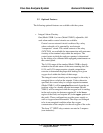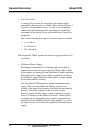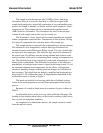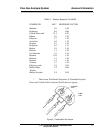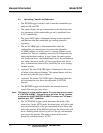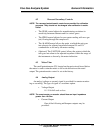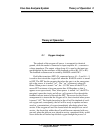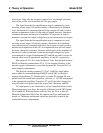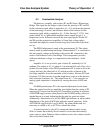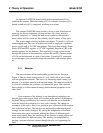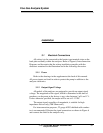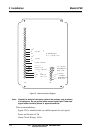
2-1
Flue Gas Analysis System Theory of Operation 2
TELEDYNE BROWN ENGINEERING
Analytical Instruments
Theory of Operation
2.1 Oxygen Analyzer
The cathode of the oxygen cell sensor is connected to electrical
ground, while the anode is connected to input amplifier A1., a current-to-
voltage transducer. The output voltage from A1 is equal to the input cur-
rent multiplied by the resistance of the feedback resistor (R1, R2, or R3).
The feedback resistance can be varied by RANGE switch SW1.
Field effect transistor (FET) Q1, connected across A1—2 and A1—3,
is used to short circuit the oxygen cell when the RANGE switch is turned
to OFF. The FET has the property that when the gate is at the same poten-
tial as the source, it is turned ‘’on’’. The ‘’on’’ resistance is about 60
Ohms. When power is turned ‘’on”, the -15 VDC turns off the FET (or
causes FET resistance to become greater than 10 Megohms so that it
appears as an open circuit). Thus, when power is turned “on”, the FET is
energized, opens the circuit, and allows cell current to flow through the
feedback resistor instead of through the FET. The reason for this circuit
arrangement is to insure that the oxygen cell is short circuited when power
is turned ‘’off”. The liquid electrolyte in the cell will be depleted of resid-
ual oxygen and, consequently, the cell will be ready to operate and mea-
sure low concentrations of oxygen immediately after being placed into
service. If the oxygen cell was not shorted when the analyzer was out of
service, the electrolyte within the cell would become saturated with oxy-
gen and, when the analyzer was placed in service, operational delay would
occur while the cell burned up residual oxygen through the process of



